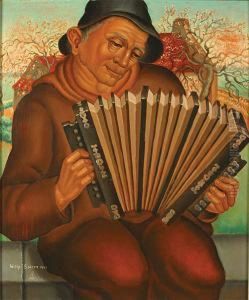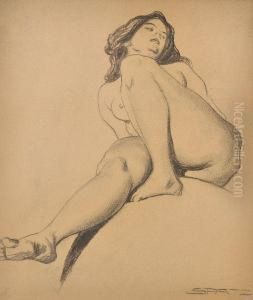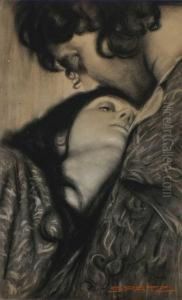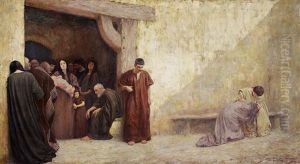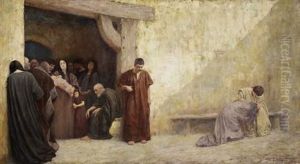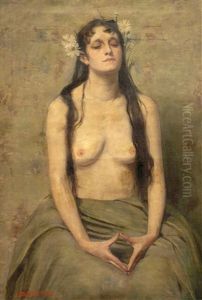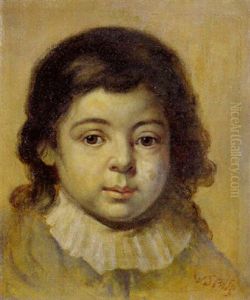Willy Spatz Paintings
Willy Spatz was a German painter known for his contributions to the genres of landscape and cityscape painting, flourishing at the turn of the 20th century. Born in Düsseldorf, Germany, in 1861, Spatz was deeply embedded in the rich artistic traditions of the Rhineland, an area that had a profound impact on his artistic development. He pursued his education at the prestigious Kunstakademie Düsseldorf, a hub for aspiring artists in Germany and beyond. Under the tutelage of prominent figures such as Eugen Dücker, Spatz honed his skills, particularly in the realm of landscape painting, a genre that Dücker was instrumental in evolving within the context of the Düsseldorf School of Painting.
Throughout his career, Willy Spatz remained closely linked to his native city of Düsseldorf, where he not only created but also contributed to the local art scene. His works often depicted scenes from the Rhine landscape and the urban fabric of Düsseldorf, capturing the interplay of light, atmosphere, and architectural beauty. Spatz's ability to render the mood and ambiance of a place garnered him appreciation among art collectors and the public alike. He was part of a generation of artists who transitioned from the detailed, romanticized landscapes of the 19th century to a more impressionistic approach, reflecting the changing artistic sensibilities of the era.
Despite his talent and the quality of his work, Willy Spatz has not achieved the same level of international fame as some of his contemporaries. Nevertheless, within Germany, his contributions to the landscape and cityscape genres have been recognized and celebrated. His paintings are characterized by their vibrant use of color, delicate brushwork, and the effective use of light to evoke a sense of time and place. Spatz's works are held in various German museums and private collections, serving as a testament to his skill and vision as an artist.
Willy Spatz passed away in 1931, leaving behind a legacy that, while perhaps not widely known outside of Germany, is deeply appreciated by those familiar with German landscape painting of the late 19th and early 20th centuries. His artistic journey reflects the broader trends and transitions within the art world during his lifetime, from the detailed realism of the Düsseldorf School to the more fluid and expressive techniques of impressionism. Through his paintings, Spatz continues to offer viewers a glimpse into the beauty and complexity of the German landscape and urban environment, captured through the eyes of a masterful observer of his time.
